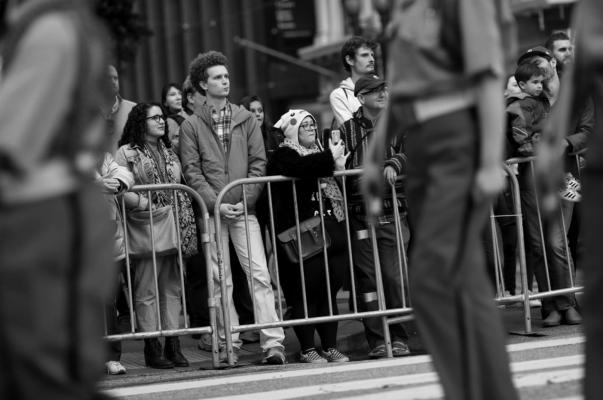One year later: What we’ve lost, and learned, during COVID-19. What’s next?
SAN JOSE, Calif. —A year ago, so many things were supposed to be different.
A new virus in China was worrisome, but it appeared to pose so little threat to Bay Area residents that joyful Lunar New Year festivities and Super Bowl parties went on as planned. Masks were discouraged. Good viral tests were imminent. Toilet paper was plentiful. Ocean cruises were still a special travel pastime. Unemployment was low and commercial office space was in tight supply.
These things, and so much more, have all changed because of the COVID-19 pandemic. It has upended our daily lives — the way we work, shop, socialize, exercise, even walk down the street. Many are out of work, struggling to get by. Some have lost friends or family to the deadly disease.
“I certainly would have never dreamt that now, so many months later, we’d be where we’re at — millions of cases and over 400,000 people dead. Lives turned upside down,” said Oakland’s Cliff Morrison, who is still battling fatigue months after his illness.
Yet even as the state struggles with its mass vaccination campaign, and worrisome variants of the virus loom on the horizon, we’re making notable progress. Tests are cheaper and faster. Patients are living longer. Dangerous pastimes, like concerts and large sporting events, are restricted. Businesses are redesigning precarious supply chains of essential products. Jobs and workers are slowly returning — and with them, our future.
The lessons learned will help science and society the next time around. Because once we recover from this pandemic, we can ill afford another.
Source
On Dec. 31, 2019, China reported a cluster of cases of pneumonia, all linked to one meat market in Wuhan, Hubei Province. A week later, the cause — a mysterious new virus — was isolated and identified. But early reports were reassuring, with “no clear evidence of human to human transmission,” according to the World Health Organization (WHO).
We now know that the virus, called SARS CoV-2, is bat-derived, sharing 96% of its genetic material with a different virus, called the Yunnan virus, found in bats from the Yunnan province in China. We don’t know how it made the 1,200-mile trip to Wuhan, whether it infected a different animal species next, or why it jumped into humans.
What’s taking so long? Beijing has repeatedly discouraged a global inquiry into the source of the pandemic. Finally, after months of negotiation, on Jan. 13 a team of WHO scientists arrived in Wuhan. Their goal is to interview people from research institutes, hospitals and the meat market. They also will scrutinize data provided by Chinese officials from samples collected at the market.
Despite China’s efforts to impede the research, WHO says it intends to conduct a rigorous and transparent study. Increased international transparency could help avoid a repeat of the disaster.
Testing
In late February, an otherwise healthy woman in her 40s was admitted to UC Davis Health with a mysterious respiratory infection. But because she didn’t meet the Centers for Disease Control’s strict criteria for testing — she hadn’t traveled to China nor had contact with travelers — the virus was undetected. She nearly died and is now known to be one of the nation’s first cases of community-acquired COVID-19.
The lack of reliable, widely available test kits hindered efforts to detect and contain the virus while it silently spread, leaving Americans largely blind to the scale of a looming public health crisis.
“The CDC was the only show in town,” recalled Nam Tran of the UC Davis Department of Pathology and Laboratory Medicine. During those crucial first months, “tests were not available to hospitals like us.”
Too little, too late, testing for the new virus ramped up. But the commercial labs were overwhelmed, taking as long as 12 days to return results. The test, called PCR, was too expensive for routine surveillance.
Since then, testing equipment has greatly improved and supplies have expanded.
There are two types of rapid tests that detect the virus. One type, the gold standard, is a spedup, smaller version of the PCR test. The other type looks for antigens of the virus, which are proteins on the virus surface. While less reliable, these antigen tests are much cheaper, easier and more comfortable to use — and can tell you, in mere minutes, whether you’re infected.
“We went from the Wright brothers’ plane to the Space Shuttle in a couple months,” said Tran.
Soon we’ll have tests that can use a simple mouth swab or a saliva sample. But there still aren’t enough tests for widespread and daily monitoring. And they can’t tell us who is still infectious, days after recovery — or who might progress from mild to serious illness.
Survival
The cumulative death rate in May, representing all cases reported from the beginning of the pandemic, was 5.9%, according to infectious disease epidemiologist Dr. George Lemp. Initially, patients were merely intubated and given antibiotics. The most severely ill were offered an investigational drug called remdesivir.
The learning curve has been steep, and our pharmaceutical tools are still limited. Only four therapies are approved: Remdesivir, dexamethasone and two types of monoclonal antibody treatments. For the vast majority of patients with mild or moderate disease, there’s not a single drug that is unequivocally effective enough for routine use.
The death rate has plummeted to 1.58%, perhaps reflecting overall improvements in the treatment and care for patients with severe disease, said Lemp. Clinicians say they’re quicker to detect dangerously low oxygen levels, and can better manage complications such as blood clots and kidney failure.
“The doctors and nurses caring for patients with severe COVID-19 should be lauded for their heroic efforts to improve patient outcomes,” he said.
A year into the crisis, the United States is finally improving its approach to drug research, with well-run trials beginning to generate more reliable answers. Three broad approaches being investigated: Antiviral drugs that kill the virus; antibodies that can fend it off, protecting cells; and agents that calm the patient’s immune system, preventing a deadly “cytokine storm” caused by an overzealous defensive response.
‘Supply chain’ crises
Demand for toilet paper is boringly consistent — so it’s the perfect candidate for so-called “justin-time” manufacturing, with low inventories in storage. But the sudden stay-at-home orders sent sales soaring 734% over the average week, creating what’s been dubbed The Great Toilet Paper Panic.
Businesses are learning a hard lesson about the weaknesses of modern manufacturing and logistics, according to Willy C. Shih, professor of management practice in business administration at Harvard Business School. Even now, some items — including coveted antiseptic wipes — are in short supply. Just months after the pandemic’s “supply
Just months after the pandemic’s “supply shock” made it hard to find household essentials and crucial protective equipment for front-line health workers, we now confront the opposite problem: “demand shock.” Home-bound consumers are ordering so many products online that container ships from China are queued up outside Long Beach and Los Angeles ports, idling. Air cargo rates have jumped four-fold.
Companies say they will be better prepared for volatility. They’re redesigning their supply chains, using data to better detect market trends and may reduce the variety of products, so it’s easier to shift manufacturing practices.
“We were lulled into complacency because we had these reliable supply chains and reliable deliveries,” said Shih. “And that isn’t the case anymore.”
Slow recovery
Healthy and energetic, Cliff Morrison flew to the University of Miami last winter to attend a film screening and receive an award. And he was busy in his career in health care administration, quickly implementing strict COVID-19 precautions at two centers for the developmentally disabled.
But now Morrison, infected 10 months ago, has joined the ranks of a growing number of so-called “long haulers,” who battle a lingering and mystifying assortment of symptoms, such as headaches, chronic fatigue or cognitive problems.
“I still tire very easily. I still have some shortness of breath. I still have ‘brain fog,’ I have difficulty remembering details and names,” said Morrison, 69. “Every day is a struggle for me at this point. Still.”
Big questions remain. How common are these persistent symptoms? What’s driving them? When will they recede? A research volunteer, Morrison is donating blood, saliva and personal information to UCSF’s Long-term Impact of Infection with Novel Coronavirus (LIINC) study, which will be complete in December 2024. It will take a long time to understand the full clinical spectrum of this disease.
An exodus — and return?
Like many young tech entrepreneurs, John Gardner spent last winter at a desk, working hard to launch his startup Kickoff, an online fitness coaching company. The economy was hot, and the state’s jobless rate was a low 3.9%. Space in San Francisco’s commercial real estate was scarce, with a vacancy rate of 4.5%. The average one-bedroom apartment in the city cost an eye-popping $3,500 a month.
Despite the challenges, “it was awesome. I was taking advantage of the Bay Area’s concentration of techies, innovators, entrepreneurs and other companies. It was like being in Florence in the 15th century,” recalls Gardner, 35.
“But then COVID hit,” he said.
When offices closed in March, Gardner and California’s other urban tech workers assumed they’d have just a brief hiatus at home. Then weeks turned into months, and many fled for cheaper and easier places, often far from the Golden State, to telecommute.
He left his one-bedroom apartment in San Francisco’s Hayes Valley, went home to Atlanta and then took to the road, growing his company from a laptop in a rented RV as he hiked, biked and kayaked through the wilds of Utah and Colorado.
Now cities like San Francisco are struggling with a high commercial vacancy rate of 11.2%. The average rent for a one-bedroom apartment in San Francisco has plummeted to $2,690 — a 24% decrease. The average rent in Los Angeles has fallen 15%.
A growing number of companies — Facebook, NetApp, LinkedIn, Adobe, Uber, Slack, Airbnb, Microsoft, Target and others — now say they’ll start bringing workers back in July or August. Google is looking at a September return date.
There is tempered optimism in California’s jobless rate, which has fallen from a high of 16.4% in May to 9.0% in December. The state has regained about 44% of the 2.6 million jobs that were lost due to the pandemic in March and April.
Employers are planning how to change their offices to ensure workers’ safety. They’ll likely allow more flexibility in work-from-home arrangements. But some talent may be gone forever.
“I do hope to come back to California, but I will not be moving back full time,” said Gardner, who is putting down new roots in New York. “There’s been a seismic shift. Where you are — it just doesn’t matter as much now.”


